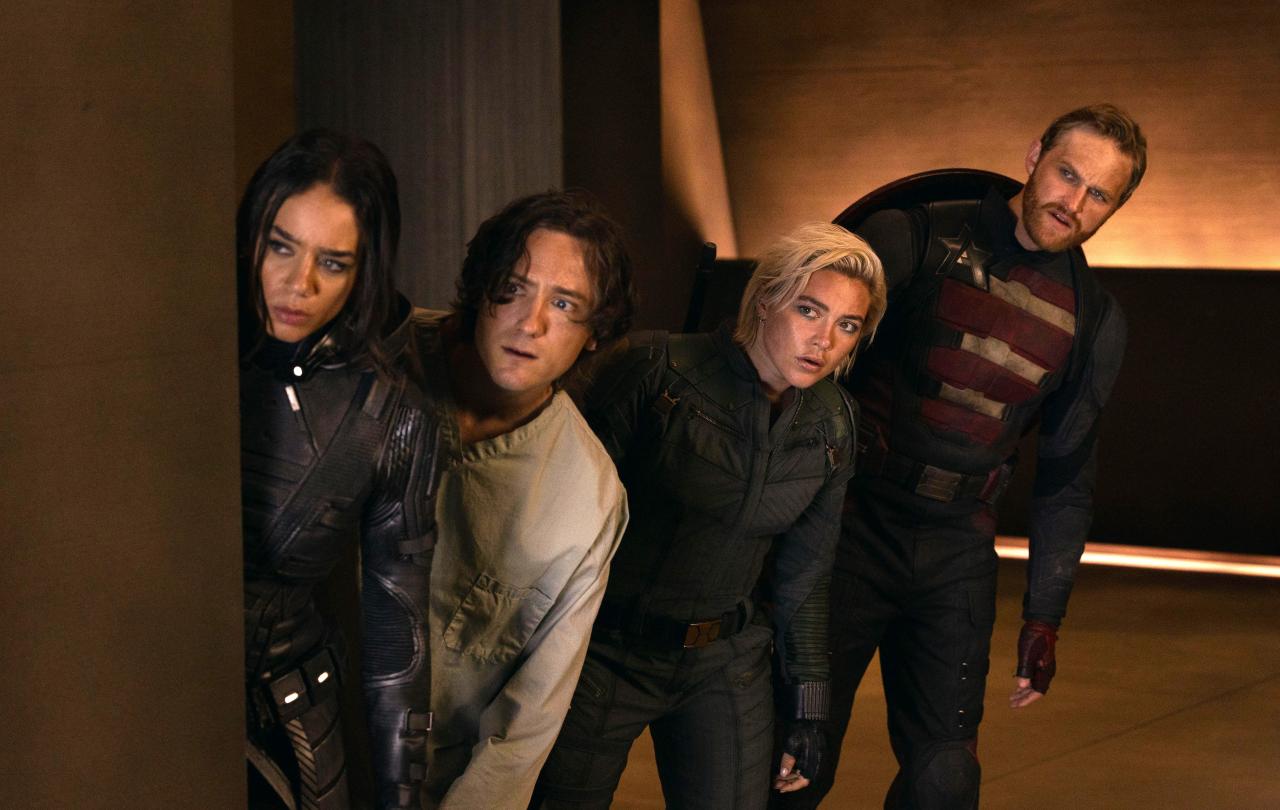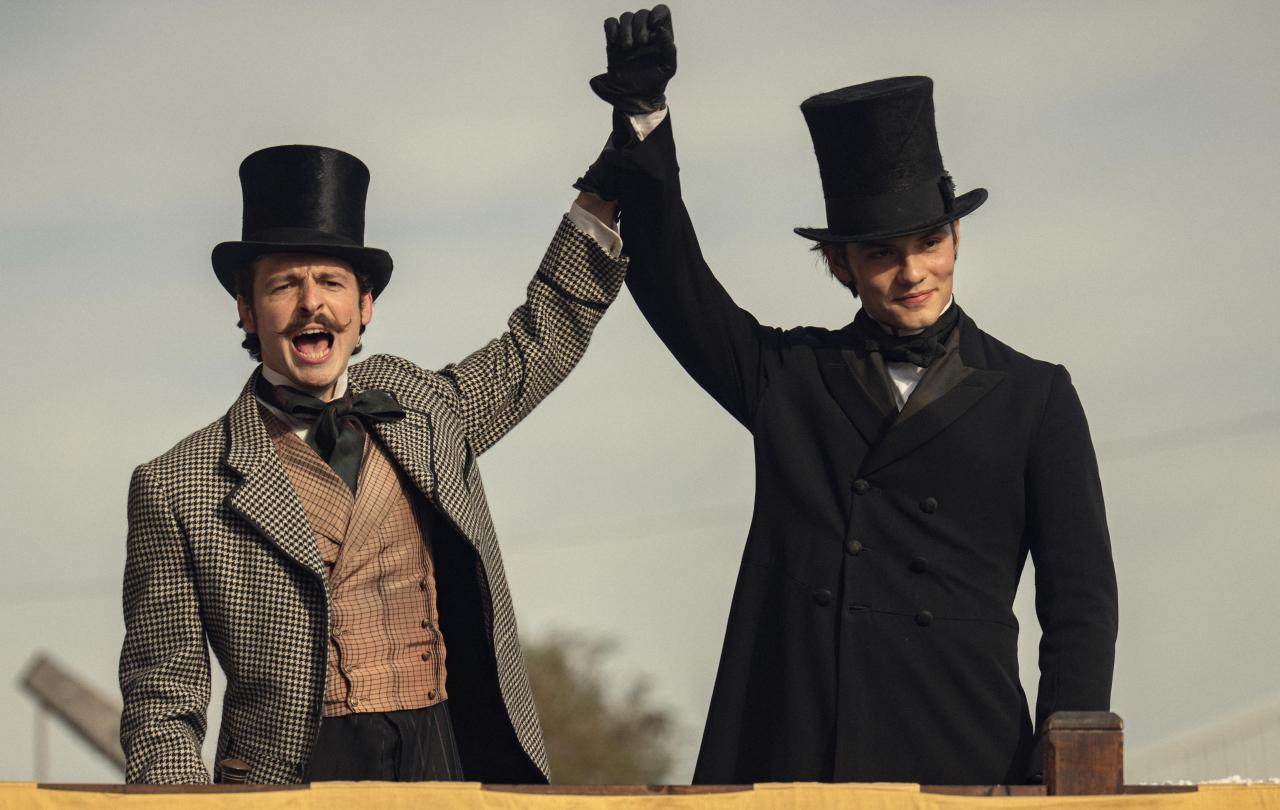
This article will contain spoilers for Thunderbolts*
It’s not unreasonable to say that fan expectations for the Thunderbolts* was tepid at best. Even the most diehard of them had to admit that the output for phase five of the Marvel Cinematic Universe has been a mixed bag. Guardians of the Galaxy Vol. 3 was deeply heartfelt, the Marvels was an enjoyable watch, but Antman and the Wasp: Quantumania definitely felt like a misstep, and the last Captain America: Brave New World certainly didn’t feel like it had exploited all the opportunities available. So, when Thunderbolts* arrived to round off this phase, featuring a team comprised of C-list villains, it was hard to generate a lot of enthusiasm. Thankfully, this film showed that Marvel still has what it takes to thrill and inspire us in equal measure.
Loosely inspired by a group created from the comics, the Thunderbolts were a team of villains masquerading as heroes who in some cases, ended up genuinely reforming. If that premise sounds familiar, that’s because it’s essentially the idea behind Suicide Squad, (a film so bad that D.C. had another go at making a Suicide Squad film and we the audience, were more than happy to just let them).
The original Avenger line up, whilst compelling, always had some distance between themselves and the core audience. A super soldier, a billionaire genius, a rage monster, a literal Norse god and a super spy carried the bulk of the story. That level of brilliance in a set of characters can be inspiring but also alienating. How for example, can a person relate to Steve Rogers? A character whose main defining trait is to always make the right moral choices and be universally respected for it?
The Thunderbolt team is not so respectable. U.S. Agent, (Wyatt Russell) the Red Guardian (David Harbour) Bucky Barnes, (Sebastian Stan) and Ghost (Hannah John-Kamen) have all at some point been trained assassins. The film goes to great lengths to show all of these characters being broken in some way or other. None more so than the character of Yelena.
Whilst this film is definitely an ensemble picture, they make no qualms about putting Florence Pugh‘s Yelena Belova front and centre of the story. Pugh’s star power showed that it could hold up alongside Marvel veterans like Scarlett Johansson and Jeremy Renner, and it’s put to good use here. The film opens with Yelena having something of an existential crisis. “There is something wrong with me” her internal monologue says; “An emptiness. I’m just…drifting. And I don’t have purpose.” Granted having a job where most of the individuals you meet are people you are either going to kill or incapacitate would indeed make loneliness an occupational hazard. But despite the fantastical circumstances, many viewers will be able to relate to the feelings presented.
It's this awareness of her own struggles then, that perhaps makes Yelena best placed to help ‘Bob’, an affable, self-deprecating young man. Bob (played pitch perfect by Lewis Pullman, son of the great Bill Pullman) is given god-like powers by Julie Dreyfuss’s Valentina Allegra de Fontaine, in the hopes of making him a protector for the earth against any inter-galactic threats. With his new powers, Bob is virtually unstoppable. There’s just one problem; Bob clearly suffers from some type of crippling depression, which when amped up with super-powers makes him ‘The Void.’ His appearance; a black outline sucking in all detail save for two pin pricks of light where his eyes should be, combined with the ability to effortlessly turn people into black scorch marks, is the stuff of nightmares. Move over Churchill’s ‘black dog’, we now have a new metaphor for depression and its all-consuming power.
Battling depression is an area where the church is still lagging behind the world at large. “A depressed Christian has a double burden” writes Dr John Lockley in his book A Practical Workbook for the Depressed Christian, “Not only is he depressed but he also feels guilty because, as a Christian, he feels he is supposed to be full of joy.”
In some evangelical circles, depression is either treated as something that doesn’t exist, is minimised, or mistakenly believed to be the result of unconfessed sin. Spiritual leaders who are ignorant of the nuance around mental health believe that depression can simply be prayed away. When that doesn’t work, they can often blame the sufferer for their lack of healing, putting them in a very lonely place. “One of the most painful elements of mental illness is that it’s marked by isolation, which is exactly the opposite of what people need” writer Amy Simpson said in a 2014 interview; “And one of the things people with mental illness most need is for this kind of loving community to tighten around them, not to loosen”. Why is this relevant to a superhero blockbuster? Well, the climax of the film does a great job of illustrating a positive approach to mental health.
The finale of Thunderbolts* somehow manages to have its cake and eat it. Once again, New York is in need of saving, but also, it’s about trying to help a young person overcome their depression and not completely succumb to The Void. Being able to go into someone’s mind and see their core traumas writ large is the most comic book conceit in storytelling. Inside Bob’s psyche, we see him trying to fight The Void, and failing, and it’s only when he has help from the rest of the Thunderbolts* is he able to get a temporary release from The Void’s grip. It would be a mistake to over-state this scene as a full-on treatise on how to tackle mental health issues, but it might just have some clues as to how to go about it: 1) don’t expect that any battle with depression is decisive. It can always come back and it’s better to prepare for that possibility and 2) you don’t have to battle it alone, it would be madness to even try.
It's a surprisingly sincere place for a seemingly wry film to end, but it really, really works. It could be that expectations may have been lowered, or that we were expecting a film with the emotional depth of a puddle. But Thunderbolts* wildly exceeded expectations, and as the best post-credits scenes often do, there’s a promise that the best is yet to come.
Celebrate our 2nd birthday!
Since Spring 2023, our readers have enjoyed over 1,000 articles. All for free.
This is made possible through the generosity of our amazing community of supporters.
If you enjoy Seen & Unseen, would you consider making a gift towards our work?
Do so by joining Behind The Seen. Alongside other benefits, you’ll receive an extra fortnightly email from me sharing my reading and reflections on the ideas that are shaping our times.
Graham Tomlin
Editor-in-Chief





